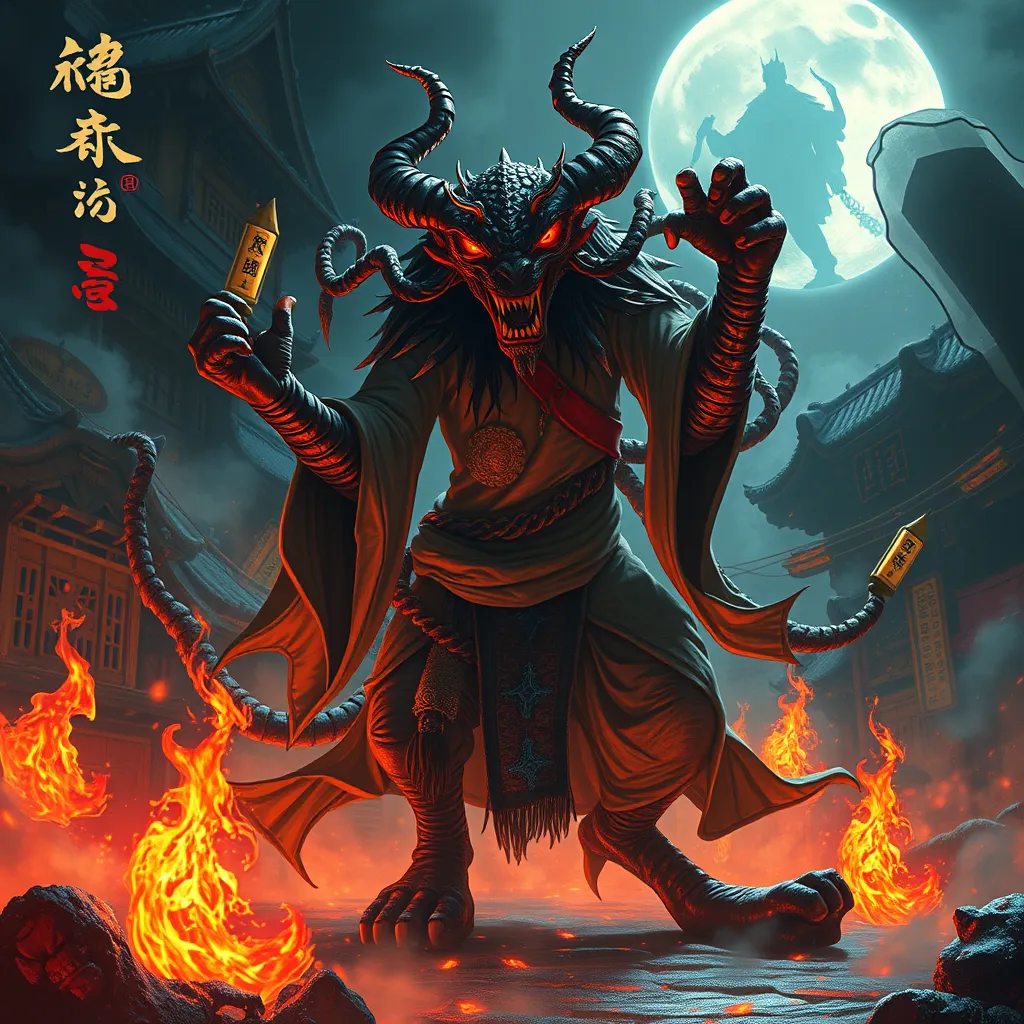The Jinn in Japanese Mythology: Encounters with Yōkai and Demons
I. Introduction
In the rich tapestry of world mythology, the Jinn of Middle Eastern folklore stand out as enigmatic beings with extraordinary powers and complex personalities. These supernatural entities have fascinated scholars and storytellers for centuries. Similarly, Japanese mythology is home to an array of supernatural beings known as Yōkai, each with its own unique traits and stories. This article seeks to explore the intriguing connections and encounters between Jinn and Yōkai, shedding light on their characteristics, cultural significance, and the ways in which they interact with human affairs.
II. Understanding Jinn: Origins and Characteristics
The concept of Jinn can be traced back to ancient Arabian culture, evolving through Islamic teachings and folklore. In pre-Islamic times, Jinn were considered spirits of the desert, capable of both good and evil. With the advent of Islam, the understanding of Jinn expanded, integrating religious teachings that emphasized their free will, similar to humans.
Some common traits and abilities of Jinn include:
- Shape-shifting capabilities
- Superhuman strength
- Invisibility
- Ability to possess humans or animals
Jinn play a significant role in human affairs, often serving as protectors, but they can also be vengeful and destructive. Their interactions with the physical world can be benevolent or malevolent, depending on the nature of the Jinn and the circumstances surrounding their encounters with humans.
III. The Yōkai: Japan’s Supernatural Beings
In Japan, Yōkai are a diverse group of supernatural beings that can range from mischievous spirits to malevolent entities. The term “Yōkai” encompasses a variety of creatures, including ghosts, shape-shifters, and even inanimate objects that have gained consciousness. Yōkai can be classified into several categories, including:
- Yūrei (ghosts)
- Tenguei (bird-like spirits)
- Kappa (water creatures)
- Tanuki (shape-shifting creatures)
The historical evolution of Yōkai is deeply intertwined with Japanese folklore and cultural practices. Over centuries, they have reflected societal fears and moral lessons, serving as cautionary figures that warn against certain behaviors. Comparatively, Yōkai share similarities with supernatural entities from other cultures, showcasing a universal fascination with the unknown.
IV. Encounters Between Jinn and Yōkai
While Jinn are primarily associated with Arabian folklore, historical accounts suggest the existence of Jinn-like figures within Japanese traditions. These beings often embody similar traits, such as shape-shifting and the capacity for both harm and healing.
Notable similarities in behavior and powers between Jinn and Yōkai include:
- The ability to influence human emotions and actions
- Interactions with humans that can lead to beneficial or harmful outcomes
- Manifestations as natural phenomena or inanimate objects
The intercultural exchanges between Middle Eastern and Japanese folklore are intriguing, as trade routes and cultural interactions flourished throughout history. These exchanges may have allowed for the blending of mythologies, leading to the creation of hybrid supernatural beings.
V. Notable Jinn and Yōkai in Folklore
In the world of folklore, several notable Jinn and Yōkai have emerged, each with their own captivating stories. Among the most famous Jinn is Iblis, often viewed as a rebellious figure who refused to bow to Adam, symbolizing the struggle between good and evil. Another prominent Jinn is the Ifrit, a powerful spirit associated with fire and vengeance.
Similarly, in Japanese folklore, key Yōkai include:
- Kappa: Water-dwelling creatures known for their trickery and mischief.
- Rokurokubi: Yōkai that can stretch their necks at night, often causing terror.
- Yuki-onna: The snow woman, a spirit associated with winter and sorrow.
These figures serve as cultural touchstones, reflecting the moral lessons and societal fears prevalent in their respective cultures. A comparative analysis reveals that both Jinn and Yōkai embody the complexities of human nature, representing the duality of existence.
VI. Thematic Connections: Good vs. Evil
At the core of many Jinn and Yōkai narratives is the theme of moral duality. Jinn are often depicted as beings who can choose between righteousness and malevolence, serving as protectors or destroyers depending on their whims. This duality mirrors the portrayal of Yōkai in Japanese folklore, where these beings often embody the fears and anxieties of society.
The symbolism of Jinn as protectors or destroyers can be seen in various stories where they intervene in human affairs:
- Jinn may assist humans in need, granting wishes or offering protection.
- Conversely, they can also bring about calamity, punishing those who offend them.
Yōkai, too, serve as manifestations of cultural fears. For instance, the Kappa can be seen as a metaphor for the dangers of water, while the Yuki-onna may symbolize the perils of winter and the fragility of life.
VII. Contemporary Representations
In modern media, both Jinn and Yōkai have found new life, appearing in literature, film, and anime. The portrayal of Jinn often emphasizes their mystical nature and duality, as seen in works like “The Arabian Nights.” In contrast, Yōkai have gained popularity in contemporary anime, such as “Natsume’s Book of Friends,” where they are depicted with depth and complexity.
The influence of Jinn and Yōkai on popular culture is evident in various forms of storytelling, with cross-cultural adaptations allowing for reinterpretations of these beings. The blending of mythologies creates a rich narrative landscape, inviting audiences to explore the nuances of different cultures.
VIII. Conclusion
In summary, the exploration of Jinn and Yōkai reveals a fascinating interplay of cultural narratives and mythological themes. Understanding their encounters enriches our appreciation of folklore, highlighting the significance of cultural exchanges in shaping beliefs and stories. As we navigate an increasingly interconnected world, the relevance of these supernatural beings endures, reminding us of our shared humanity and the mysteries that lie beyond the veil of reality.




